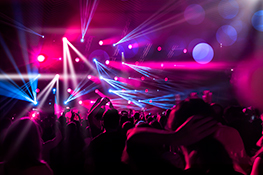Stage Lighting Design: From Amateur to Professional in 5 Steps
1. Mastering the Fundamentals: Light, Color, and Control
Before diving into complex designs, a solid grasp of fundamental lighting principles is crucial. This involves understanding the properties of light itself: intensity, color temperature (measured in Kelvin), and color mixing (additive and subtractive). Learn about different types of lighting instruments—fresnels, ellipsoidal reflectors (LEOs), PAR cans, and LED fixtures—and their unique beam characteristics. Understanding the control systems, like dimmer boards and modern digital consoles, is equally important. Familiarize yourself with basic lighting techniques such as key lighting, fill lighting, backlighting, and special effects. Resources like online tutorials, lighting textbooks, and even attending local theatre productions can greatly accelerate your learning.
2. Developing Your Artistic Eye and Storytelling Through Light
Lighting design is more than just illuminating a stage; it’s about telling a story. Develop your artistic eye by studying the work of renowned lighting designers. Analyze how they use light and shadow to create mood, atmosphere, and emotional impact. Pay attention to the color palettes they employ and how lighting choices support the narrative. Experiment with different lighting styles – from naturalistic representations to highly stylized and abstract designs. Start by lighting simple scenes, gradually increasing complexity. Consider how light can shape the actors’ performances and highlight key moments in a play or musical.
3. Software Proficiency: From Simple Plots to Complex Designs
Proficiency in lighting design software is a must for professionals. Programs like Vectorworks, WYSIWYG, and Capture are industry standards, offering 3D visualization and precise control over lighting plots. Start with the basics, learning how to model your stage, add lighting fixtures, and create lighting cues. Mastering the software allows for efficient pre-visualization, collaboration with other designers, and ultimately, a more polished and professional result. Many software companies offer tutorials and online courses to aid in learning the software efficiently.
4. Hands-on Experience: Learning by Doing
Theoretical knowledge is only half the battle. Gaining practical experience is essential for any aspiring lighting designer. Volunteer for local theatre productions, student films, or community events. Assist experienced lighting designers, observe their workflow, and ask questions. Don’t be afraid to experiment and make mistakes—they are valuable learning opportunities. Practical experience will allow you to understand the nuances of lighting in real-world situations and develop problem-solving skills crucial for overcoming unexpected challenges during a production.
5. Building Your Portfolio and Networking: Showcasing Your Talent
A strong portfolio is your key to landing professional gigs. Document your lighting designs with high-quality photos and videos from your projects. Highlight your technical skills, creative vision, and the impact of your lighting on the overall production. Actively network with other professionals in the industry – attend industry events, workshops, and conferences. Connect with other designers, technicians, directors, and producers. Build relationships and collaborate on projects to expand your experience and increase your visibility within the industry. Online platforms like LinkedIn can also be incredibly beneficial for networking and showcasing your portfolio.


 Auditorium Construction Services
Auditorium Construction Services 